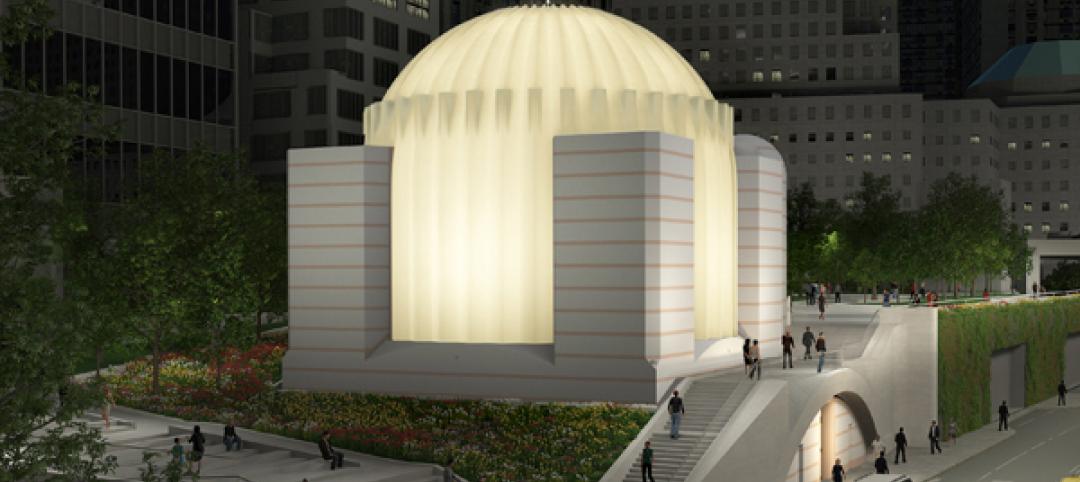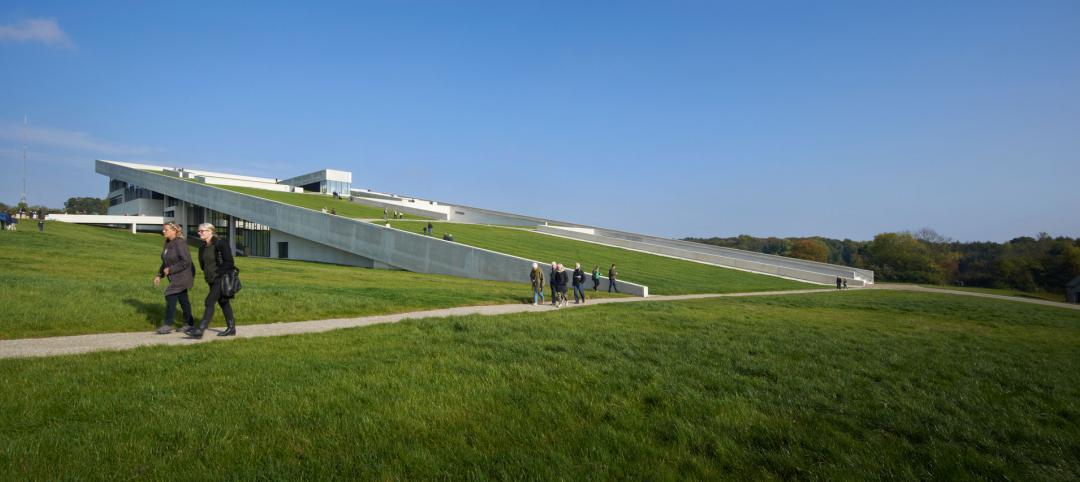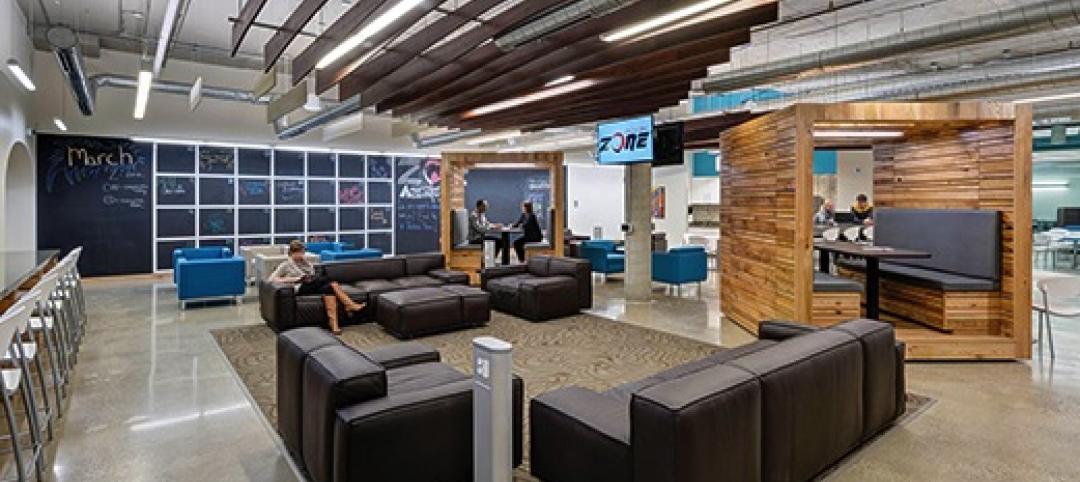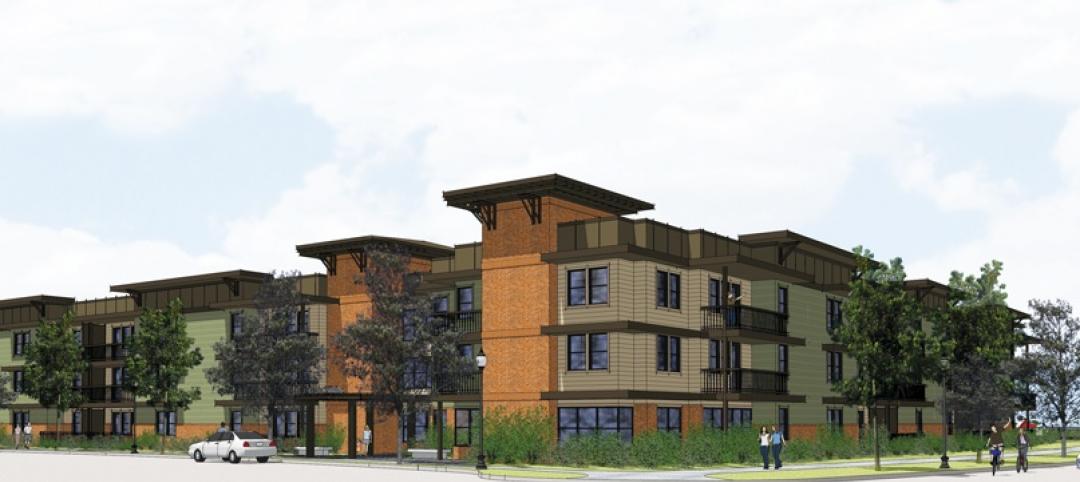The 1939 Hinman Research Building on the campus of the Georgia Institute of Technology, in Atlanta, is undergoing an $8.5 million renovation to adapt and expand its capacity to serve the program objectives of the university’s College of Architecture. The renovation, which is being designed using building information modeling (BIM) and related software systems, will also produce flexible and functional interior space that encourages interaction and collaboration by architecture students and faculty.
The 35,000-sf Hinman Building was last renovated in 1951. As a result, the project, which is expected to achieve LEED-EB Gold certification from the U.S. Green Building Council, required significant interior improvement to create adequate studio and classroom space for the architecture school. The scope of work for the general contractor on the design-build project, the Dallas-based Beck Group, included demolition and abatement of the existing interior and completion of the new interior finishes.
The design for the reconstructed building, by the architecture firms Office da of Boston (design architect) and Lord Aeck & Sargent of Atlanta (architect of record), used elaborate interior millwork to create the kind of flexible and functional spaces that the College of Architecture desired. Not only was it necessary to manufacture the thousands of new interior millwork pieces at reasonable cost and within the schedule. They also had to fit the tight tolerances at their interfaces with the existing structure, as mandated by the design (which was modeled in Autodesk Revit). To accomplish this difficult task, the designers used Rhino 3D, a design tool that uses NURBS, or non-uniform rational b-splines, to create curvilinear pieces and other sophisticated shapes that other 3D design software can’t touch.
“We generally use Rhino for studying design and generating freeform geometry on most of our projects,” said Tom Beresford, project architect for Office da on the Hinman Building project. Beresford said his firm had also used the software in previous work involving custom millwork packages.
The 3D architectural models worked for design purposes, but once the Beck Group got them on site they noticed several existing conditions that made installation difficult. In particular, the staircases in the post-demolition interior of the building were mostly in the wrong locations.
“Dealing with unknowns was adding contingencies,” said Josh Oakley, BIM manager for the Beck Group. “The price of installation was starting to escalate because it would take time to figure out how to install all of these pieces, and it was getting to the point that stairs and millwork may have had to be value-engineered out. Our field people were not used to spending days on installation.”
Oakley and his Beck colleagues—notably assistant project manager Frank Fralick and project engineer Jesse Plata—came up with a plan to import the geometries of the existing Rhino models into Autodesk Inventor and then transfer that data to EdgeCAM, a computer-aided machining program that can apply CNC tooling paths to the model geometry. With these paths the model information could be used to create G code, a series of numbers used to program a CNC milling machine to create the thousands of millwork pieces needed for the project. They hoped this process could meet the $547,000 millwork budget and deliver it on time.
“If there was a way to make these models only once, we were going to do it,” Oakley said. “We needed to mitigate risk and meet budget.”
Oakley and Fralick also took a point-cloud scan of the preconstruction Hinman Building and put that information into their Autodesk Revit and Rhino models to ensure accuracy in the as-built model. In a matter of one day all the existing conditions were imported into the design model.
This workflow also allowed the Building Team to create animated DWF files as instructions for the installation of each piece of millwork from the Autodesk Inventor model. These “IKEA-like” graphical representations showed how each piece fit and where holes needed to be drilled to create the finished, ornate millwork. Oakley said having these detailed animations allowed Beck to reduce the time needed to put together the thousands of unlabeled pieces of millwork and keep the project on track and under budget.
The next step was finding a CNC fabricator who could create the custom millwork pieces using CNC machines. The modified workflow made it likely that using a traditional commercial project fabricator would be out of the question. The Building Team would also need space to store the thousands of pieces necessary to create the new interior millwork. The scope of work and the storage problem would require a different approach entirely.
The Beck team approached Amir Nejad, president and CEO of residential custom cabinetmaker Royal Custom Cabinets in Norcross, Ga., a suburb of Atlanta, to take on the millwork project. Using Royal Custom’s CNC production capability, the fabrication process was quickly commoditized. The EdgeCAM data was easily fed into Royal Custom Cabinets’ four-axis router machines. The millwork pieces began rolling out and were stored in a 15,000-sf warehouse in Norcross that the Beck Group leased.
The millwork was recently completed, and the Beck Group will be returning $30,000 in a change order fund to owner Georgia Tech. The Building Team is using the same process to build custom furniture for the project, which is expected to be completed, with the rest of the interior fit-out, in time for the Hinman Building’s reopening in January.
Related Stories
| Oct 23, 2014
Santiago Calatrava-designed church breaks ground in Lower Manhattan
Saturday marked the public "ground blessing" ceremony for the Saint Nicholas National Shrine, the Greek Orthodox Church destroyed on 9/11 by the collapse of the World Trade Center towers.
| Oct 23, 2014
Prehistory museum's slanted roof mimics archaeological excavation [slideshow]
Mimicking the unearthing of archaeological sites, Henning Larsen Architects' recently opened Moesgaard Museum in Denmark has a planted roof that slopes upward out of the landscape.
| Oct 23, 2014
China's 'weird' buildings: President Xi Jinping wants no more of them
During a literary symposium in Beijing, Chinese President Xi Jinping urged architects, authors, actors, and other artists to produce work with "artistic and moral value."
| Oct 23, 2014
Architecture Billings Index shows strong demand for institutional, mixed-practice design
AIA reported the September ABI score was 55.2, up from a mark of 53.0 in August. This score reflects an increase in design activity.
| Oct 22, 2014
Customization is the key in tomorrow's workplace
The importance of mobility, flexibility, and sustainability in the world of corporate design are already well-established. A newer trend that’s gaining deserved attention is customizability, and how it will look in the coming years, writes GS&P's Leith Oatman.
| Oct 21, 2014
Passive House concept gains momentum in apartment design
Passive House, an ultra-efficient building standard that originated in Germany, has been used for single-family homes since its inception in 1990. Only recently has the concept made its way into the U.S. commercial buildings market.
| Oct 21, 2014
Hartford Hospital plans $150 million expansion for Bone and Joint Institute
The bright-white structures will feature a curvilinear form, mimicking bones and ligament.
| Oct 21, 2014
Norman Foster, Zaha Hadid release plans for resorts in Nanjing and Wuhan, China
Jumeirah Group, a hotel group forming a part of investment group Dubai Holding, has chosen Zaha Hadid and Norman Foster to design two of three of its proposed resorts in Nanjing, Wuhan, and Haikou.
| Oct 21, 2014
Inside LEED v4: The view from the MEP engineering seats
Much of the spirited discussion around LEED v4 has been centered on the Materials & Resources Credit. At least one voice in the wilderness is shouting for greater attention to another huge change in LEED: the shift to ASHRAE 90.1-2010 as the new reference standard for Energy & Atmosphere prerequisites and credits.
| Oct 21, 2014
Perkins Eastman white paper explores state of the senior living industry in the Carolinas
Among the experts interviewed for the white paper, there was a general consensus that the model for continuing-care retirement communities is changing, driven by both the changing consumers and more prevalent global interest on the effects of aging.

















